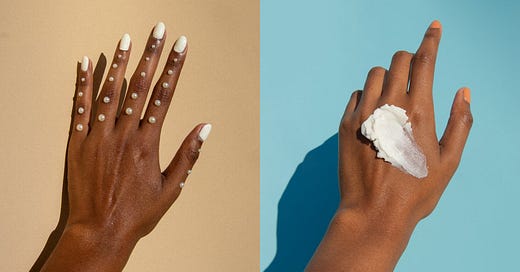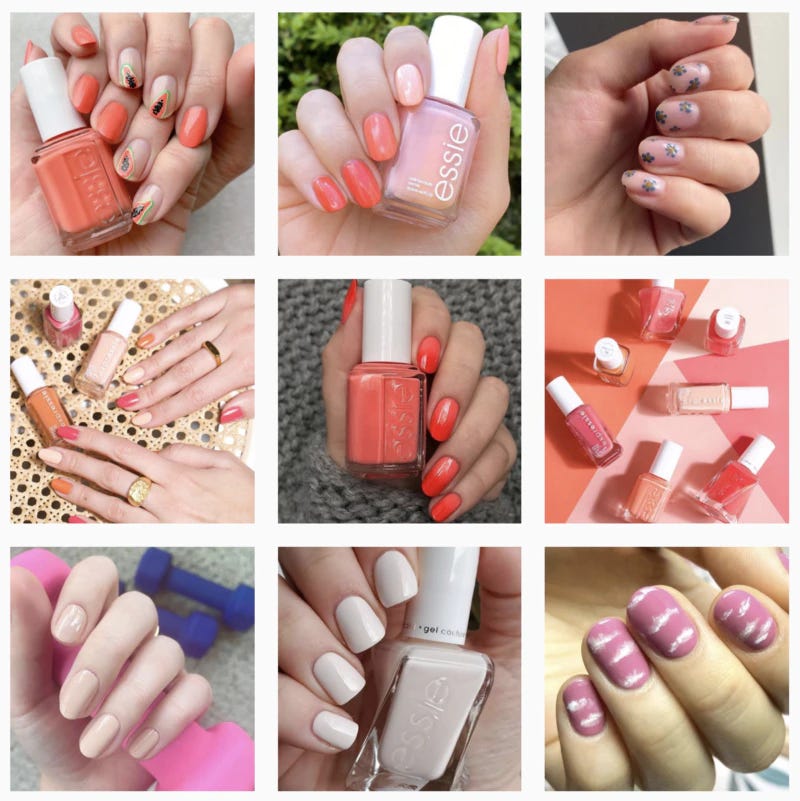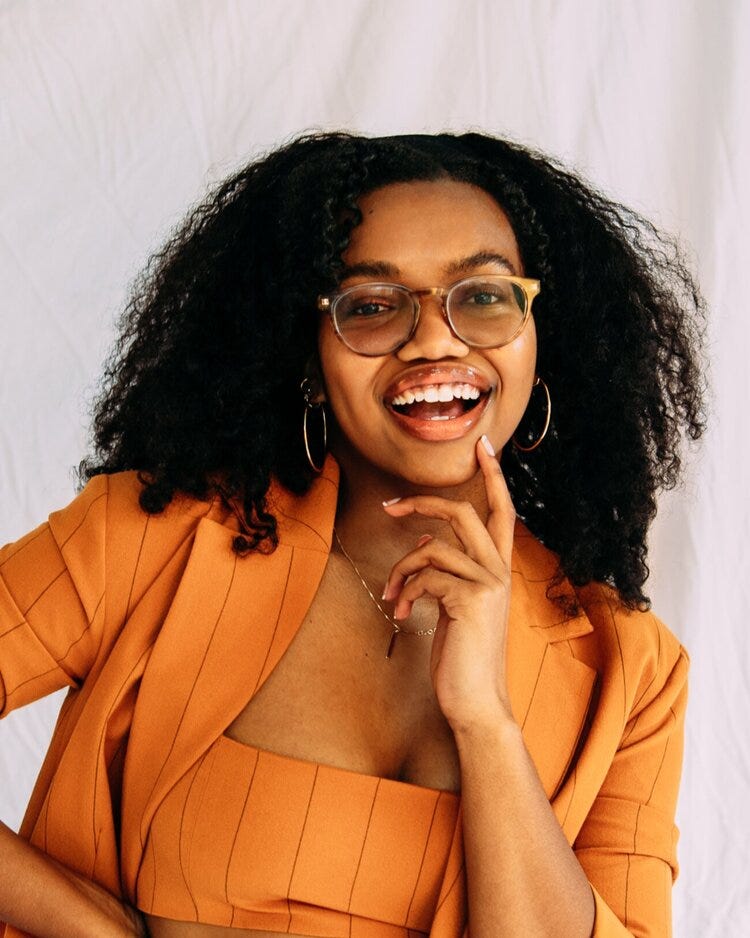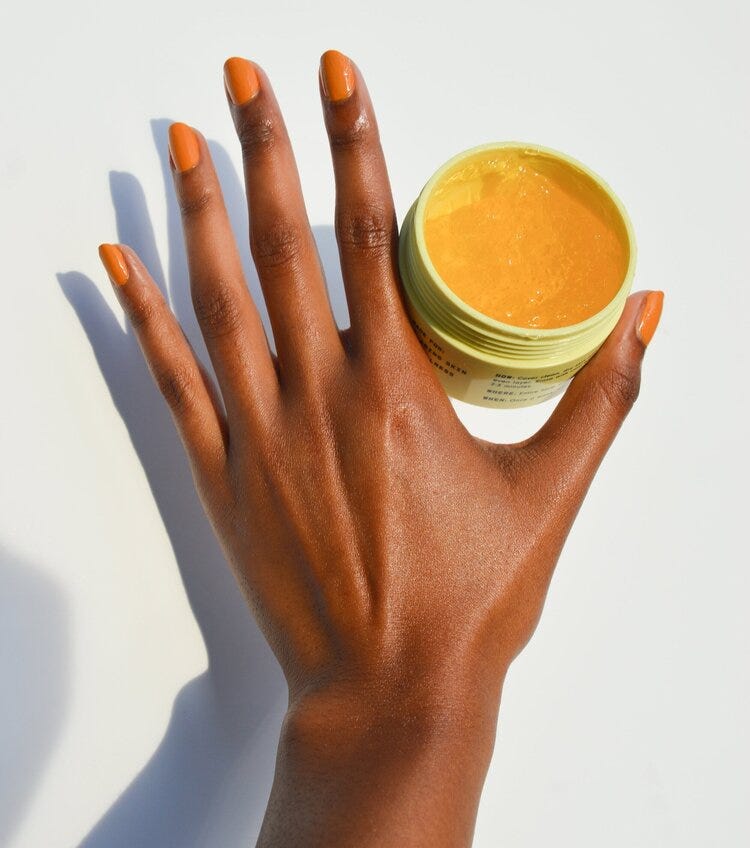Where Are All The Brown Hands? That was the headline of the first-ever issue of this newsletter, an investigation into the blindingly white Instagram feeds of the biggest nail care companies in the business. It was published back in May 2020 — meaning yes, this marks the two-year anniversary of The Unpublishable!
I started pitching the idea for “Where Are All The Brown Hands?” to beauty media platforms in late 2019. I’d been working as a beauty reporter for a couple years at that point — I was on-staff at The Zoe Report, and regularly freelanced for outlets like Vogue, Marie Claire, and Cosmopolitan. But the idea was turned down by a dozen publications, mainstream and indie alike. Why? Probably, in part, because it spotlighted the lack of racial diversity at specific, high-profile polish brands like Essie, O.P.I., Orly, JINsoon, and Deborah Lippmann. (Read: It didn’t play well with advertisers.)
Still, I knew it was an important story, so after six months of pitching, I decided to self-publish. And I decided to use the article to launch a newsletter. And I decided to call the newsletter The Unpublishable, since the beauty media wouldn’t, you know, publish it.
I didn’t have many (any?) subscribers at the start, but “Where Are All The Brown Hands?” was widely shared on Instagram and caused a little bit of a stir. Two highlights: First, Deborah Lippmann personally reached out to me to share a plan for making her company’s site and social media channels more diverse and inclusive. Next, Hannah Harris, a student at the Savannah College of Art & Design, was inspired to launch @browngirlhands, an Instagram account devoted to product photography featuring brown hands. Both were hugely exciting events for me. Even at the start of The Unpublishable, my mission was clear: to materially change beauty culture on a mass scale. These two instances proved that my work could and did affect change. (Modest change, yes! But change nonetheless.)
A month later, George Floyd was murdered by the police.
The event sparked a nation-wide reckoning with white supremacy. Cosmetic companies were soon forced to acknowledge and address the systemic racism, colorism, and exclusivity at the heart of the industry — and brands, executives, editors, and influencers that didn’t respond with a statement or plan of action were called out, canceled, or otherwise (rightfully) criticized.
Suddenly, “Where Are All The Brown Hands?” was everywhere.
Nylon, Dazed Beauty, and The Cut — three publications that declined or ignored my original pitch for “Where Are all The Brown Hands?” in late 2019 and early 2020, by the way — quoted it in their coverage of Harris’ work with @browngirlhands. My investigation was referenced in British Vogue, Yahoo! News, Who What Wear, Hypebae, Global Cosmetics News, and more. And while I was so glad the topic was getting the beauty media attention it deserved, I was also so frustrated that that coverage was forced by a cultural shift that made it necessary for brands and businesses to address these topics or risk their profits. (There’s a lesson here for the beauty media, maybe: Don’t let critical coverage of the climate crisis, capitalism, consumerism, and global humanitarian issues get to that point, too. The cultural shift is coming! You’ll be forced to address these topics sooner or later. Might as well be sooner.)
Over the past two years, Harris has single-handedly changed the beauty industry through her work with Brown Girl Hands. And I mean that literally — her fingers have graced the feeds of Sephora, Glossier, Topicals, Benefit Cosmetics, and more. BGH has grown from a niche Instagram account to a full-on studio for inclusive product photography. “We’ve worked with over 45 brands now,” Harris tells me. “Notable clients include Warby Parker, Rare Beauty, Kiehl’s, Allure, Versed, Supergoop, and more.” Additionally, the SCAD student was named an inaugural honoree for Ulta Beauty’s MUSE 100, the youngest honoree on Glossy’s Top 50 Fashion and Beauty Changemakers list in 2020, and was awarded a Pinterest Creator Residency.
Seeing Harris’ success has been humbling and motivating, to say the least. She reminds me that the beauty industry can change, and that it will change, and that we are the change. I am beyond honored to be a part of the Brown Girl Hands story, and on this anniversary of The Unpublishable, my wish is that the newsletter — and you, the people that power it — will continue to change beauty culture for the better.
To celebrate, I caught up with Harris to chat about BGH. Read on to learn more about her highs, her frustrations, and her future in beauty.
Jessica DeFino (me): Was there one particular quote or line or statistic — something in my original article that really stuck with you — that made you say, “I have to address this”?
Hannah Harris: One quote that stood out to me was “In the case of AILA Cosmetics, I lost count. The last irrefutably-brown fingers on the brand’s Instagram page are from 2017, three years and hundreds of posts ago.” I couldn’t believe there were brands that hadn’t featured Black hands in over three years.
“I couldn’t believe there were brands that hadn’t featured Black hands in over three years.”
JD: What is Brown Girl Hands today, and how has it evolved over the years?
HH: Brown Girl Hands started as an Instagram page to raise awareness about the lack of diversity in beauty product photography. Now, it’s an inclusive content studio creating both photos and videos for brands, allowing them to diversify their imagery.
JD: What was the first brand to reach out to you to create content for them, and what was that process like?
HH: The first person/brand to reach out to me was Ben Bennett of Naturium. I was in shock when he asked me to shoot the entire Naturium collection, which at the time was a huge undertaking for me. I went out and bought a new lens and everything. I originally thought I’d just be creating my own content, but that first partnership with Naturium opened the door for me to begin curating the client roster we now have.
JD: Are any brands that you've turned down or decided not to work with, and why?
HH: Typically when I chose not to work with brands it has to do with alignment and budget. Some brands don’t know exactly what they’re looking for or want multiple re-shoots due to constantly evolving briefs. I’m balancing a lot, so typically those types of clients take up too much time. On the other hand, while I’m normally flexible on rate, especially with small businesses, if I feel my services are worth more, I’ll turn down a brand.
JD: Today, what's the day-to-day of running BGH like?
HH: I typically devote about one day a week total. Sometimes that’s spread out into a few hours a day or sometimes all at once. It’s currently just me doing the administrative tasks, doing the nails, modeling the content, shooting the content and posting. I’m grateful to have my mom who helps with the financials and great roommates who will lend a helping hand (literally) if I need someone to hold a prop, pour water for an action shot, etc.
JD: What's been your proudest BGH moment so far?
HH: I think my proudest moment was hitting 10k [on Instagram]. I still just can’t believe that ten thousand people care about such a niche mission (lol). During that time, I scrolled back and read so many of the messages and comments about what BGH means to people and I can’t help but smile.
JD: Over the past two years, what have you learned about the power of representation in beauty media? What about the limits of representation?
HH: I’ve learned that representation makes a difference. When I think about the visibility of Black creators and brands it’s amazing to see Black people not only exist but thrive in spaces that they were once closed off to us. There are of course limits, currently, the racial pay gap between white and Black influencers is 35% (study). So while it's great that Black influencers are working with brands to increase consumer-facing efforts, behind the scenes they aren’t being paid the same.
“I think a lot of brands believe that casting Black influencers or models is enough but the teams behind those brands have to reflect the consumer. We still don’t have enough Black executives in beauty.”
JD: From your start point in 2020 to now... Do you think the industry has undergone a lasting transformation in the areas of racism, colorism, and representation?
HH: I think the industry as a whole has made a lot of progress in terms of consumer-facing efforts, but now it's really about the work behind the scenes. I think a lot of brands believe that casting Black influencers or models is enough but the teams behind those brands have to reflect the consumer. We still don’t have enough Black executives in beauty either and so going forward it's really about creating a sustainable talent pipeline that nurtures and develops promising Black interns and employees.
JD: What's next for you and BGH?
HH: First, up is graduating college on June 3rd! I’m planning to take four to six weeks off post-grad just to reset after a grateful but whirlwind four years. In July, I’m looking to enter formally enter the beauty industry and I’m currently looking for jobs in marketing. BGH will still continue as a personal project of mine and I’m starting to brainstorm about how we can evolve our efforts.
My work is only possible thanks to paying subscribers!
If you’ve been considering a paid subscription to The Unpublishable, why not upgrade in honor of our two year anniversary?
Paid subscribers get:
Access to all past and future articles from The Unpublishable
Bi-weekly editions of “The Don’t Buy List” — AKA, a roundup of product-free content, curated to broaden your understanding of the beauty industry and help us all break free from beauty standards
The ability to comment on articles and participate in community conversation threads
The joy of facilitating the creation of beauty content that doesn’t push products on people
Here’s more information about how The Unpublishable’s paid subscription is structured and why, along with a free preview of The Don’t Buy List.








Congratulations on 2 whole years of leading the conversation on so many important topics that cannot be ignored any longer. This newsletter is making a difference, you are making a difference 💜
Jessica, I know you’re probably crazy busy as is, but would you ever consider making a podcast?